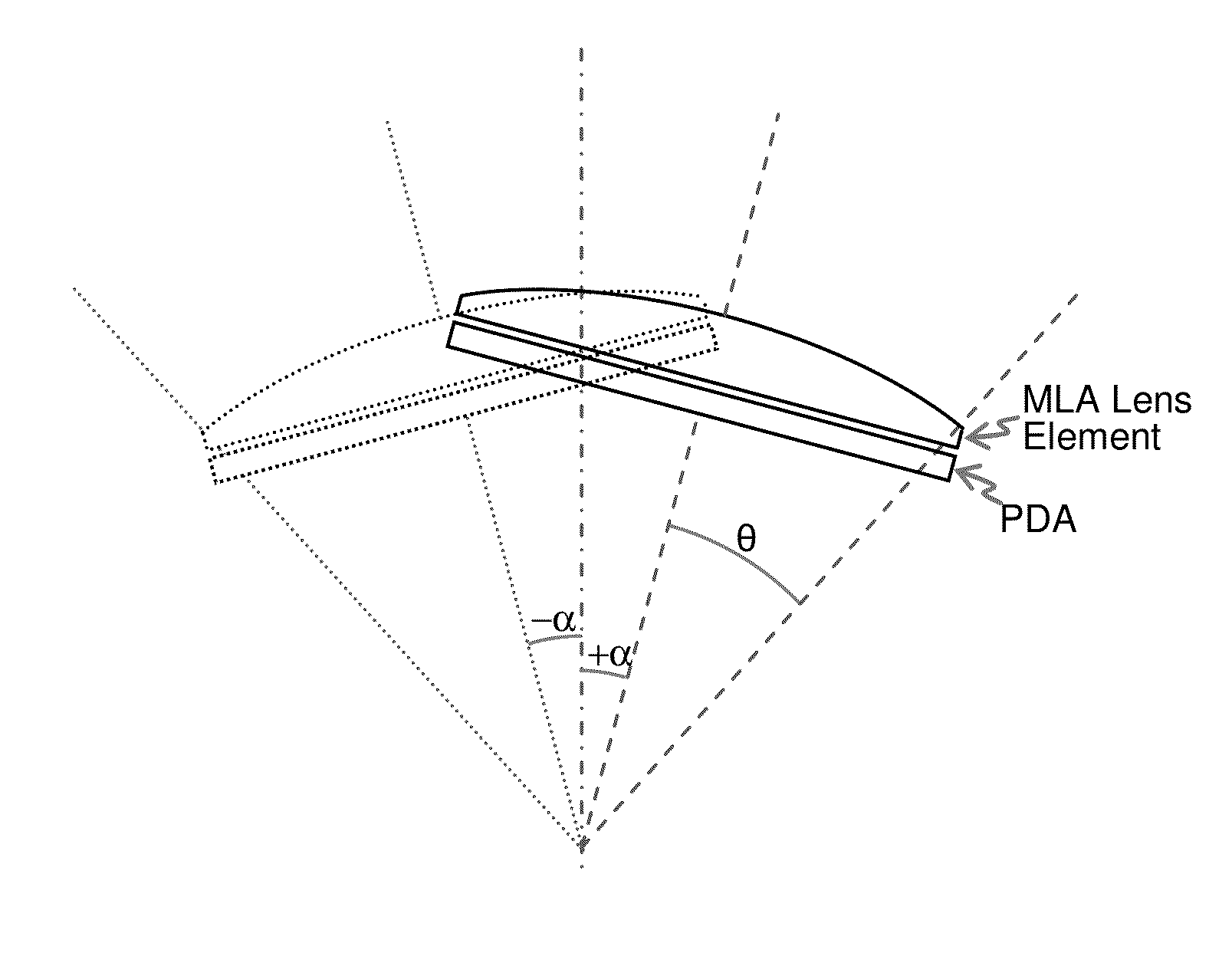Spatio-temporal light field cameras
a spatial-temporal light field and camera technology, applied in the field of light field cameras and radiance cameras, can solve the problems of inability to integrate advanced auto focusing capabilities poor performance and excessive added cost of incorporating advanced auto focusing features into cameras targeting mobile devices, and current state-of-the-art light field cameras are inherently bulky in themselves and not at all suited for being embedded in mobile devices
- Summary
- Abstract
- Description
- Claims
- Application Information
AI Technical Summary
Benefits of technology
Problems solved by technology
Method used
Image
Examples
embodiment 600
[0054]Referring to the side view illustration of FIG. 6, the articulation of the bonding pad 625 together with the bonded PDA / MLA assembly 230 would be accomplished using a set of electromagnets 635 placed at the four corners of the backside of the hinged bonding pad 625, and a set of permanent magnets 636 placed on the topside of base layer 630 in alignment with the four corners of the backside of the hinged bonding pad 625. The electromagnets 635 would be a coil having a metal core formed at wafer level using multilayer imprint lithography on the backside of the hinged bonding pad 625. The permanent magnets 636 would be a thin magnetic strip typically of neodymium magnet (Nd2Fe14B) or the like. Articulation of the hinged bonding pad 625 together with the bonded PDA / MLA assembly 230 as described earlier would be accomplished by driving the set of electromagnets 635 with an electrical signal having the appropriate temporal amplitude variation to affect the appropriate temporal varia...
embodiment 700
[0057]The hinged pad 721 / 735 is retained in place within the surface curvature of the pedestal 730 / 736 by the spring layer 725 which contains at each of its four corners a single spiral shaped spring 726 that is etched into the spring layer 725. As illustrated in FIG. 7 exploded view isometric, the inner end of each of the four spiral shaped springs incorporates an inner bonding pad 727 which corresponds to an identical bonding pad 722 located at the backside of the pad layer 721. Embedded within the spiral shaped springs 726 are multiple metal rails which are used to route the electrical interface signals from the inner bonding pad 727 to a set of contact pads 728 located at the peripheral edge of the backside of the spring layer 725. The edge contacts 728 on the backside of the outer end of the spring layer 725 correspond to a matching set of bonding pads 729 that are located at the peripheral edge of the base layer 730. The edge contacts on the topside of the base layer 730 are c...
PUM
 Login to View More
Login to View More Abstract
Description
Claims
Application Information
 Login to View More
Login to View More - R&D
- Intellectual Property
- Life Sciences
- Materials
- Tech Scout
- Unparalleled Data Quality
- Higher Quality Content
- 60% Fewer Hallucinations
Browse by: Latest US Patents, China's latest patents, Technical Efficacy Thesaurus, Application Domain, Technology Topic, Popular Technical Reports.
© 2025 PatSnap. All rights reserved.Legal|Privacy policy|Modern Slavery Act Transparency Statement|Sitemap|About US| Contact US: help@patsnap.com



